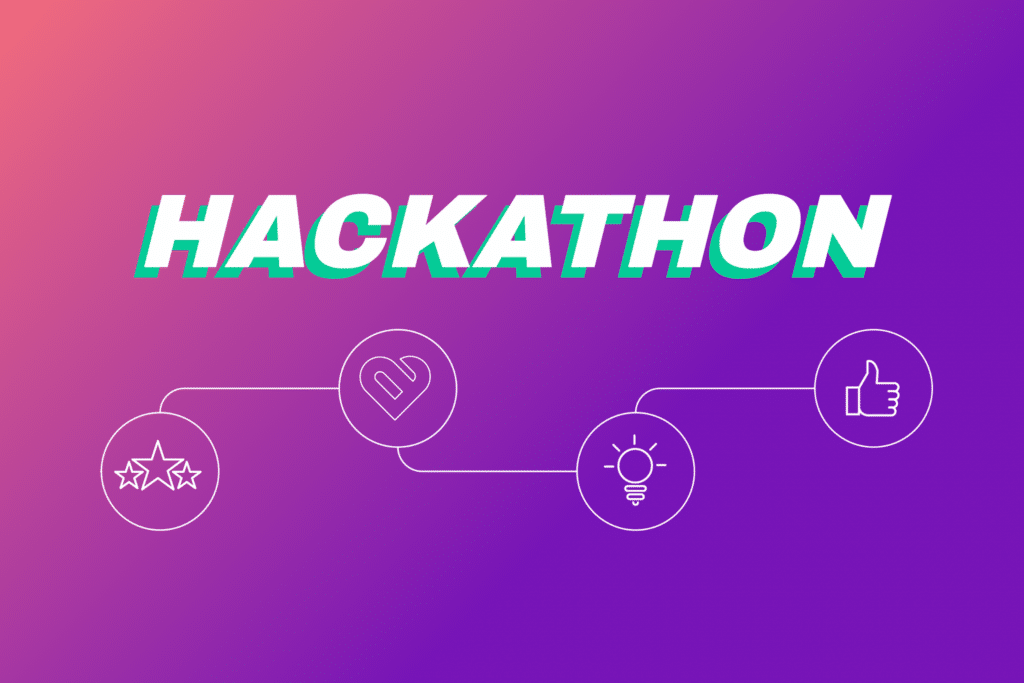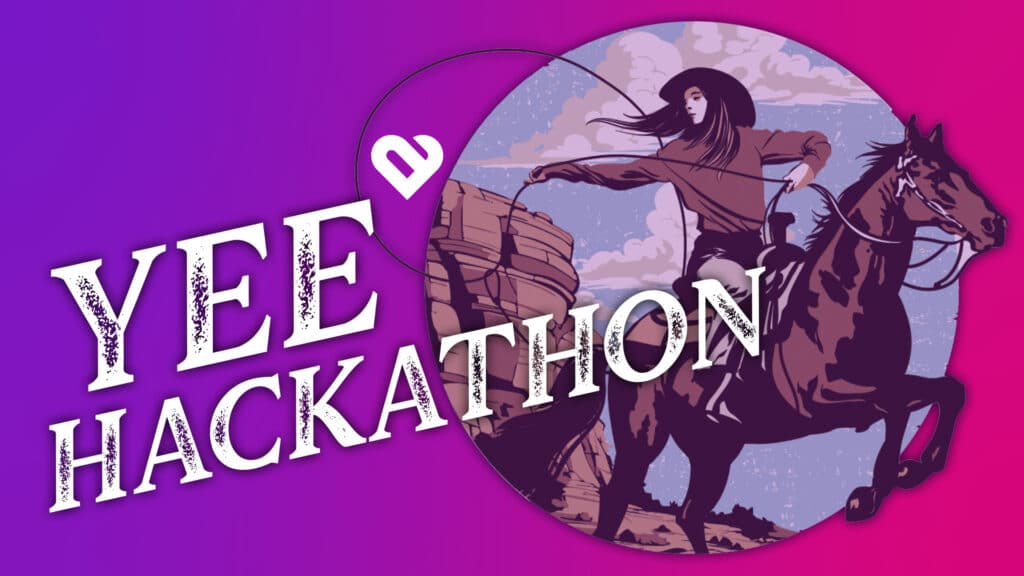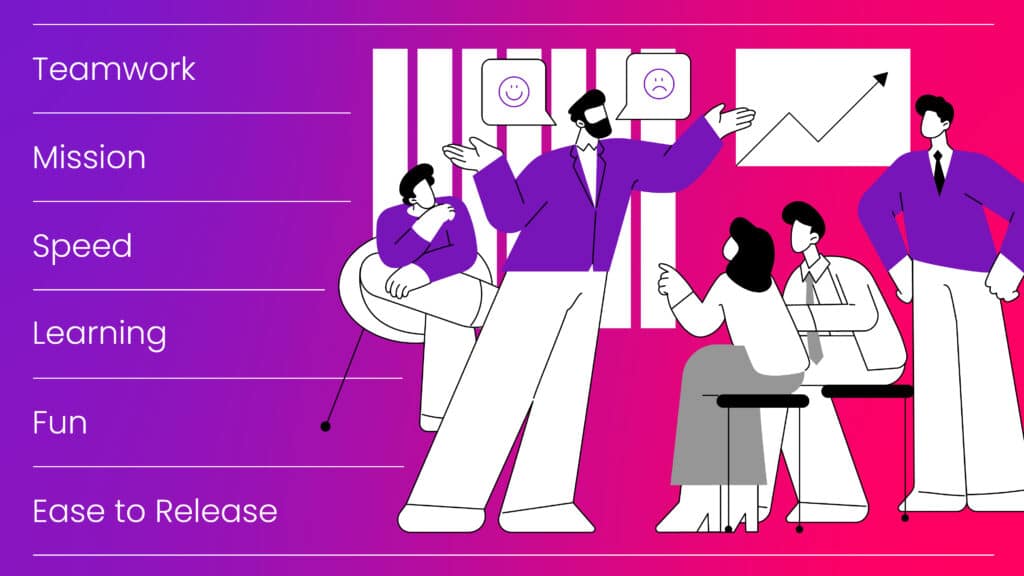
In March, our Innovation Organization (IO) held our first ever Hackathon event! If you have never participated in one, it’s a super collaborative event where participants come together to hack away at a marathon pace (hence, hackathon!) on a project of their choosing. At Artera, we see hackathons as an opportunity to get very creative and explore solving problems. It is all about freedom to create something fun and empowering individuals to implement ideas of their own outside of their day to day work.
The event was sponsored by our SVP of Engineering (Ashu Agte) and our SVP of Product (Isabelle Meyer Stapf), who both believe in the importance of building engagement, collaboration, and innovation through an event like this. Ashu has even publicly shared that hackathons are one of his favorite events! We are extremely lucky to work for a team of leaders who truly empower us to be an innovative organization (they literally named our department Innovation Organization). In this blog, I will share 1) our toolkit for planning a hackathon and 2) our biggest learnings. Whether you are planning a hackathon, or have never participated in one and/or are just curious about how they work, I hope our learnings will help you.
Our Tooltips for Planning a Hackathon
- Decide dates in advance. Decide on a length of time that feels right and give yourself plenty of time to plan out an event. Make sure you also block the time on appropriate calendars to maximize participation.
- Artera Approach: We dedicated one full week to our hackathon event. We planned a quarter out and picked March as the best time (thought process: it is before the Easter holiday and spring breaks, and it is well into our first quarter so we are confident with meeting deadlines on planned work). During our quarterly planning process, we asked every team to block this week from planning any sprint work. Of course we can’t plan for unplanned work, so the only exception we made for this week was that individuals may get pulled away to address critical projects that impacted our customers and patient care.
- Secure sponsors and a budget. This ensures you have a great support system and advocacy from the leadership team, as well as money to spend to make it a more engaging experience.
- Artera Approach: Ashu and Isabelle sponsored the hackathon and gave us a budget to give out a cash prize for each winning team. We heard that some teams ended up donating their winnings to good causes, what a win-win on all fronts. The money was also spent on hackathon lunches and swag (our first iteration of IO swag was t-shirts and stickers). Our sponsors also made sure that the rest of the company supported our plan of having a minimal work week outside of hackathon projects.
- Decide on award categories and the judges. It really builds excitement and engagement when you can offer various categories for teams to compete in.
- Artera Approach: We chose four winning categories initially- Best Customer Value, Best Internal Value, Most Innovative, and People’s Choice (voted on by the company). Because there were so many outstandingly creative demos, we ended up adding a fifth category for Best Demo at the end of the event. We selected three judges: Guillaume de Zwirek (our CEO), Sarah Shillington (our SVP of Client Experience), and Isabelle Meyer Stapf (our SVP of Product). We met with them in advance and reviewed an Excel template that was created for scoring. They would each score a specific criteria that aligns to the winning categories, which then get aggregated into a total score used to identify our winning teams.
- Create a hackathon repository. Store all the hackathon details and guidelines for participants to reference. There are a lot of logistics involved, like with all events, so staying organized is key!
- Artera Approach: We created a Confluence space for all things related to the hackathon. One page was dedicated to anyone who wanted to submit a project idea for others to pick up. Another page was dedicated to teams to sign up with a project description, team members, if they would need additional infrastructure support (so we can plan in advance), and a point of contact so we can coordinate as needed. We created a shared space to store all the demo decks (including demo guidelines). And we also made sure there was a public Slack channel to share all hackathon communications and for participants to ask questions and interact as needed.
- Ask the org the self organize into teams. Teams are forming on their own, choosing projects they are passionate about, and identifying roles they are playing on the team.
- Artera Approach: We really didn’t have to be involved in this part of the process too much, as it was very natural for everyone to form a team and choose the project they wanted to work on together. Some individuals used our public hackathon channel to find a team or recruit members. Some folks stepped in at an advisory capacity, and some folks ended up crossing over more than one project. The best part of this process was that people who are not engineers also signed up to participate!
- Quick project review. Do a quick check that all projects are in alignment with the theme/goal of your hackathon.
- Artera Approach: Our sponsors took a quick glimpse at all the projects and descriptions to make sure there were no red flags. Our guidance was that teams can hack on anything as long as it is related to the Artera application in some way. All projects received the green light from our sponsors.
- Schedule and plan a demo. Decide who should be invited to watch all the project demos and how much time is needed for this portion of the hackathon. This is the big moment of the hackathon, so get your creative juices flowing to make this a fun event!
- Artera Approach: We wanted the entire company to be able to watch the demos if they can! We made it an optional event and had almost 50% of the company stop in throughout the 3-hour demo. Yes, our demo was 3 hours long! We had 27 projects to demo, and with 5-min demos, transition times, voting and scoring times… we used the whole time.
Our Biggest Takeaways
We had so many learnings from our inaugural hackathon and I wanted to share them with anyone who is interested in running or joining a hackathon event in the future.
Learning #1 – Learn New Skills
Hackathons are a great way for everyone to learn new skills. Our participants represented roles across engineering, design, product, data, DevOps, client experience, and even sales. Our front-end engineers dabbled in backend engineering (and vice versa), our designers dipped their feet in some coding themselves (in a safe dev environment of course), and sales team members started to see technical lingo in action! In this hackathon, all of our teams were surrounded by diverse backgrounds and expertise, and had a safe space to explore new ideas and experiment with new technologies. It was so clear that Arterians gained a level of personal and professional growth from this experience. From the perspective of someone who watched teams demo their projects, I can also honestly say I learned a whole lot about the potential of how much our product could improve patient care.
Learning #2 – Expand Your Professional Network
Hackathons are a great way to network with other professionals internally (and externally if your hackathon is cross-company). Many of our hackathon participants worked with peers from different teams or different functions. It is always a valuable experience to expand your professional network and learn from other ways of working, different ways of thinking, and collaborating with different personalities. Our hackathon gave us all a unique opportunity to collaborate with others to create something new and innovative. The demos also really spotlighted some hidden talent in the company!
Learning #3 – Have Fun and Be Creative
Hackathons are a lot of work (I mean, aren’t marathons by nature exhausting?), but they’re also a lot of fun. Our teams were able to step away from their day to day work, hack away with minimal interruptions, and truly embrace the spirit of collaboration and innovation. Participants were also able to expense a lunch on Artera. We all love a free lunch and this was extremely important to the group of Arterians who are also proud foodies (we literally named our teams with food puns. Examples: SaaShimi, API-tizers, and Commbucha). As teams demoed their project, they showed so much creativity in their materials. Our teams had themes that spanned from Pokemon, to Matrix, to John Travolta, and we had live demos that could be mistaken as movie productions. There were smiles all around the physical room and virtual cameras.
Needless to say, our inaugural hackathon was a huge success and if there is a repeated phrase from our participants, it’s “I can’t wait for the next hackathon!”. If you’re interested in technology and innovation, participating in a hackathon is a must. Whether you’re early in your career or an experienced professional, there is something for everyone at a hackathon!

The contents of this post as well as the opinions expressed herein do not contain business advice. The business information provided is for general informational and educational purposes only and is not a substitute for professional advice. Accordingly, before taking any actions based upon such information, we encourage you to consult with the appropriate professionals. THE USE OR RELIANCE OF ANY INFORMATION CONTAINED IN THIS POST IS SOLELY AT YOUR OWN RISK.




